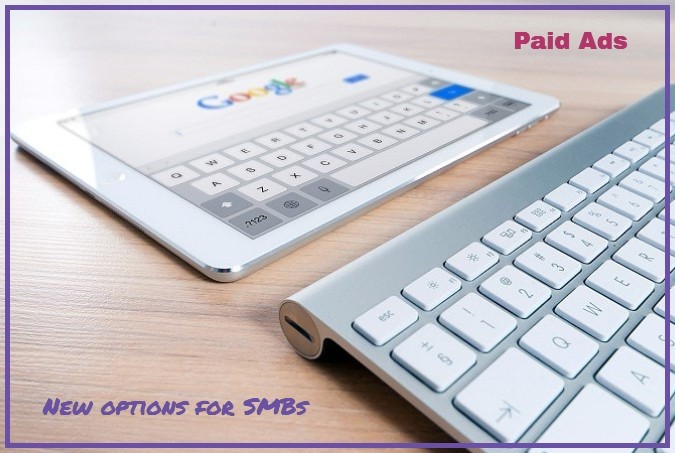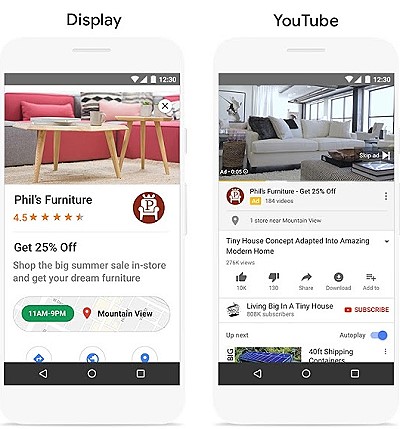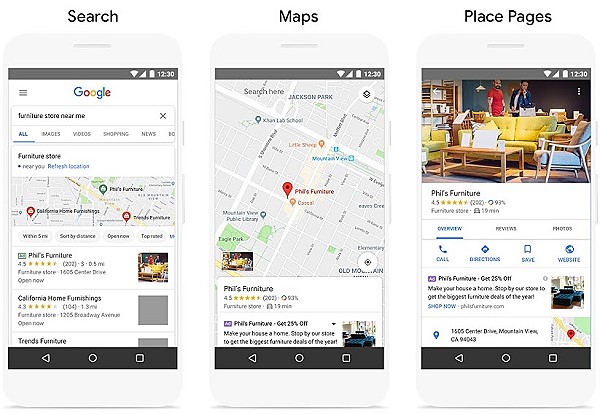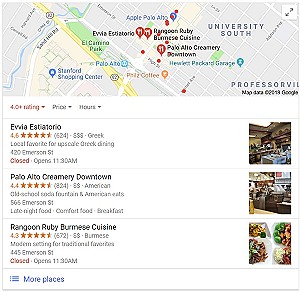
What Are Responsive Search Ads?
What you need to know.
 Google has announced on the Google Ads blog several new initiatives, as part of their transition from Google Adwords to Google Ads. All of these are interesting new campaigns. What are Responsive Search Ads, Smart Campaigns and Local Campaigns? They are powered by machine learning and take automation to another level.
Google has announced on the Google Ads blog several new initiatives, as part of their transition from Google Adwords to Google Ads. All of these are interesting new campaigns. What are Responsive Search Ads, Smart Campaigns and Local Campaigns? They are powered by machine learning and take automation to another level.
We’re seeing more and more mentions of artificial intelligence and machine learning, from both Google and Bing.
Automation is not new, Google Display Network ads are based on automation.
Pretty much everything related to campaign management will be automated or have the option. Bids, headlines, even creative are going to be handled, if desired, with a few inputs from the advertiser. You may supply some creative, such as your logo or a product image.
As Google transitions from the Adwords brand to Google Ads, entrepreneurs have more enticing options. Share on XWhat are Responsive Search Ads
Take a look at Responsive search ads, a new ad type which automates ad testing of most-if-not-all elements.
This is the new Google Ads, no longer Adwords.
Responsive ads offer more flexibility with minimal preparation. They automatically adjust their size, appearance, and format to fit just about any available ad space. For example, your responsive ad might show as a native banner ad on one site and a dynamic text ad on another, as it automatically transforms itself to fit precisely where you need it to go to meet your advertising goals. As such, responsive ads can increase your reach and impact while also saving you time.

This automated ad testing may save some advertisers time and money if they’ll give up manual split-testing and turn over the reins to Google. They even test the fonts used in your ads.
Google has been encouraging advertisers to using at least 3 ads per ad group, but adoption has been slow. This new option may make it an easier choice.
Responsive search ads allow advertisers to enter up to 15 headlines and four descriptions. They’ve increased the number of characters in descriptions from 80 to 90 as an incentive.
In the search results, Responsive search ads can show as many as three headlines, instead of two, and up to two 90-character descriptions instead of one 80-character description.
Responsive search ads kick in more characters as an incentive to try them. Advertisers can enter as many as 15 headlines and four descriptions, which can be up to 90 characters instead of 80. In the search results, Responsive search ads can show as many as three headlines, instead of two, and up to two 90-character descriptions instead of one 80-character description.
Google automatically serves the combination deemed to most closely match the user’s search query. The more varied the inputs, the more opportunities the ad group has to enter auctions related to the keywords used in those inputs.
As you create your campaigns, Google will show SOME examples of how your ads will look, but it is impossible to show what could be millions of different versions based on headlines, copy, images and platform. Some advertisers using standard dynamic ads will begin to see suggested responsive ads set up in their dynamic campaigns.
Test these different inputs with 5 radically different headlines to get a more comprehensive look at options – or to give Google more leeway to test. Slight variations do not create much value because they’re limited.
The best practice for responsive text ads is writing headlines that are relevant to the keywords in the ad group and including at least one of the keywords in your ad group in the headlines, remains valid.
Smart Campaigns
 What are Smart Campaigns? Smart campaigns is the first new offering from the new Google Ads brand. Like Responsive and Local campaigns, Smart campaigns rely on machine learning to help you save time creating ads, especially when it comes to split-testing ads for higher conversions.
What are Smart Campaigns? Smart campaigns is the first new offering from the new Google Ads brand. Like Responsive and Local campaigns, Smart campaigns rely on machine learning to help you save time creating ads, especially when it comes to split-testing ads for higher conversions.
Smart campaigns will be the default campaign type for new advertisers in Google Ads and are primarily designed for small and local businesses who don’t have a dedicated marketing staff. Everyone will get access in the next several months.
Like Responsive and Local campaigns, Smart campaigns automate just about everything, including creative, delivery optimization based on advertiser goals that include things like phone calls, website visits and requests for directions to the business location.
How to Create a Smart Campaign
For Smart display campaigns to work, advertisers need to:
- Have conversion tracking set up and receive at least 50 conversions on the Display Network, or at least 100 conversions from Search ads, in the past 30 days.
- Use target CPA bidding.
- Set daily budgets to account for at least 10–15x the target CPA bid.
- Apply any site exclusions (account-level exclusions apply to these campaigns).
To set up a Smart display campaign, you will need to select one of four objectives under “Drive Action” to create a new display campaign. Then choose ‘Use Smart Display Campaign.‘
Dynamic retargeting is available through Smart Display Campaigns by attaching a feed to the campaign.
If you’re looking for precise creative control, this option is not for you. The system can generate thousands of ad permutations, and you can see example ads during the setup. You could then create your own ads based on what Google shows you.
Local Campaigns

Now the new Local Campaigns are designed to get foot traffic into stores – automated local marketing.
People are searching for local products and services more often using “near me’ as part of the search parameter. Mobile queries in particular. Google says there has been a 10x increase in the number of searches using phrases related to “near me.”
Auto-suggest SERP results including variations of ‘near me’ are showing them more frequently.
That makes optimizing your listings with consistent NAPs (Name, Address Phone) and format more important for local businesses looking for site traffic from SEO.
Objective: Foot Traffic
These new Local campaigns are based on running specific ads to targeted prospects based on – you guessed it – artificial intelligence or machine learning. The advertisements will be shown in multiple formats across Google platforms, including Search, Google Maps, Google My Business Pages, Google Display Network and YouTube. Google’s algorithm will match the searcher with location and their search preferences.
Simply share your company name, location some headlines and images such as a logo or pictures of your image and you have created a Local campaign.

Google’s new “Local Campaigns” is designed to drive foot traffic to local stores, restaurants, professional service providers and attractions.
Local campaigns give more metrics to advertisers from Google users who are signed in and have location history turned on. That information has never before been available to SMBs.
Local campaigns is being rolled out over the next several months.
Google shared another interesting stat:
80 percent of Americans are shopping at any given time
within a 48-hour period.
What are you doing to be found?
Google claims it connects users to nearby business 9 billion times per month, with one-third of those connections including direction requests! Share on X9 Billion Opportunities a Month!
If Google connects users to local businesses 9 BILLION times per month, that’s about 296 million connections per day, or 12 MILLION TIMES PER HOUR!
Google sees demand for this new type of campaign. Kim Spalding, a former small business owner who leads Small Business Ads at Google said two-thirds of small businesses use digital marketing to advertise their businesses, but face challenges and are looking for easy solutions.

The ads run across all Google properties and users cannot specify which platforms the ads run on. A Google algorithm decides when and where the ads run, based on user behavior, location and device.
Spalding said early results from Smart campaigns are 3x more effective at reaching a business’s Target Personas than Adwords Express campaigns. One early tester, a yoga store in Alexandria, VA double the number of intro offers with Smart campaigns over 2 months.
Later this year, advertisers will be able to use Image Picker to select up to 3 different images to be used to split-test with copy variations.
Smart Campaigns are designed to work With Google My Business, but is only available in 60 markets for now. It will be available around the world by the end of the year.
Machine Learning and Adsense
In February, Google launched Adsense Auto ads that also use machine learning to make placement and monetization decisions for publishers. The ads are optimized to display only when they will most likely perform best and provide a good user experience.
Let’s Review: What are Responsive Search Ads, Smart Campaigns, Local Campaigns?
 They are all new or fairly new paid advertising options for businesses. They leverage the use of machine learning to make advertising campaigns easier to set up and test. Google wants to help advertisers profit more from ads they run on Google’s collection of properties, including Search, YouTube,
They are all new or fairly new paid advertising options for businesses. They leverage the use of machine learning to make advertising campaigns easier to set up and test. Google wants to help advertisers profit more from ads they run on Google’s collection of properties, including Search, YouTube,
These new ads automate everything related to campaign management will be automated or have the option, including bids, headlines and creative. You have some control over the images and text you specify, but you may not have control of where your ads are placed. Google is going to run them when and where they think will get advertisers their biggest return.
Responsive Ads: offer more flexibility with minimal preparation. They automatically adjust their size, appearance, and format to fit just about any available ad space. Responsive ads can increase your reach and impact while also saving you time
Smart Campaigns: The first new offering from the new Google Ads brand. They are based on optimization based on machine learning and will be the default campaign type primarily designed for small and local businesses. What makes it unique is that delivery optimization based on 4 different advertiser goals that include things like phone calls, website visits and requests for directions to the business location.
Local Campaigns: Google’s new option is automated local marketing. The primary goal is helping local businesses get people to visit their restaurant, shop, office or non-profit location. There are some prerequisites: Advertisers need to have had at least 50 conversions on the Google Display Network, or at least 100 conversions from Search ads, in the past 30 days.
The benefits may be significant. For advertisers willing to give up some control, these new options will help you do more in less time, especially in regards to split-testing ads and the platforms they run on. Google says advertisers may enjoy as much as 15% more clicks.
An effective (and profitable) paid advertising campaign helps you achieve your goals and scale your business. As we outlined in a previous post, How to Succeed in Business, these new advertising options from Google will help SMBs…
- Keep it simple
- Set and meet attainable goals.
- Evaluate your performance.
- Seek help from others. (In this case, Google)
- Continue to learn.
What are Responsive Search Ads, Smart Campaigns and Local Campaigns? They give entrepreneurs the ability to deliver the right content at the right time on the right platform to reach your best prospects.
Kurt Scholle Bio
 | Kurt Scholle has been building and marketing successful websites for 20+ years. His focus for clients has been Return On Investment, which depends on knowing your best prospects, creating offers that convert and getting traffic to that content. |



